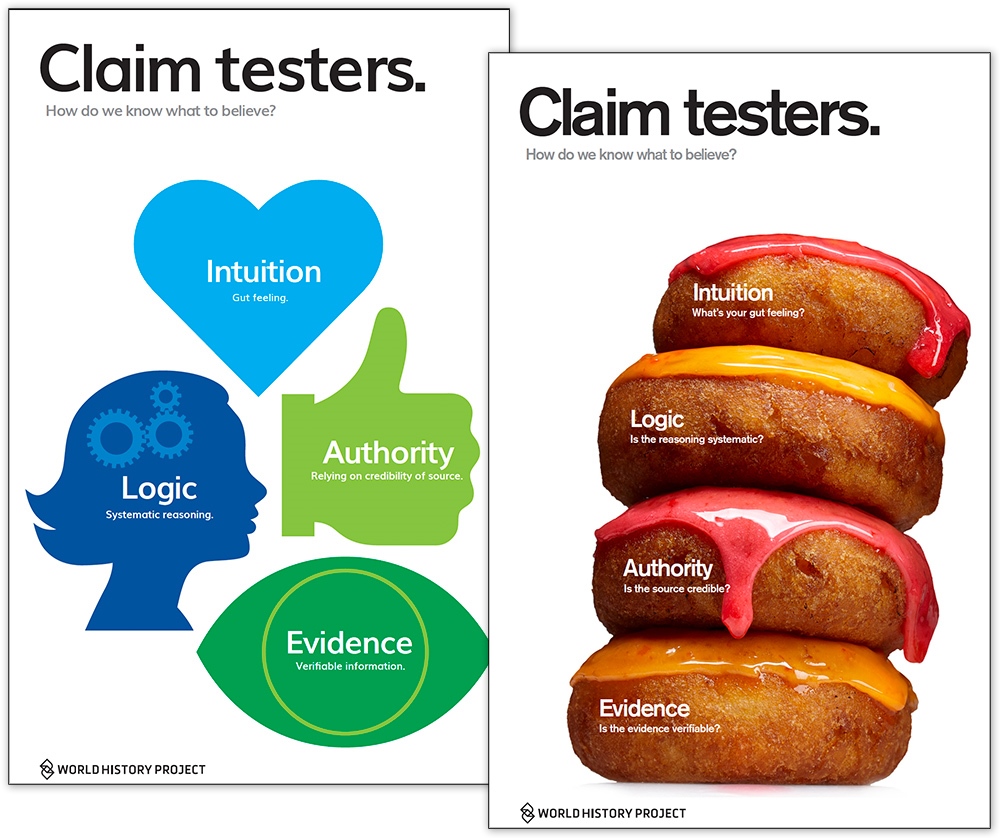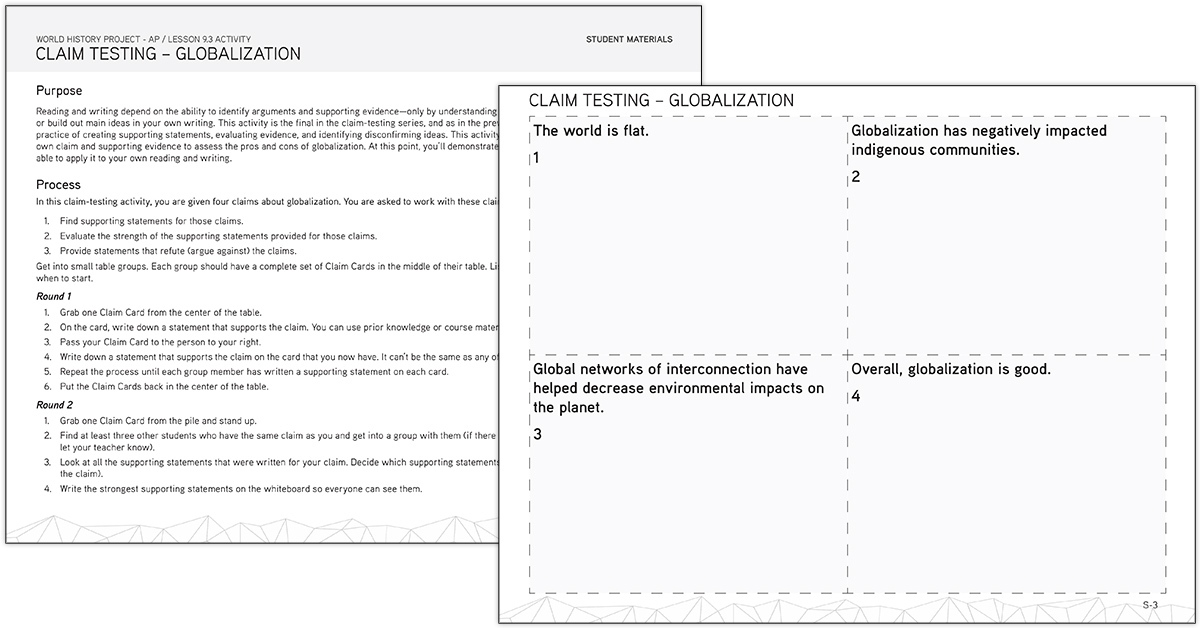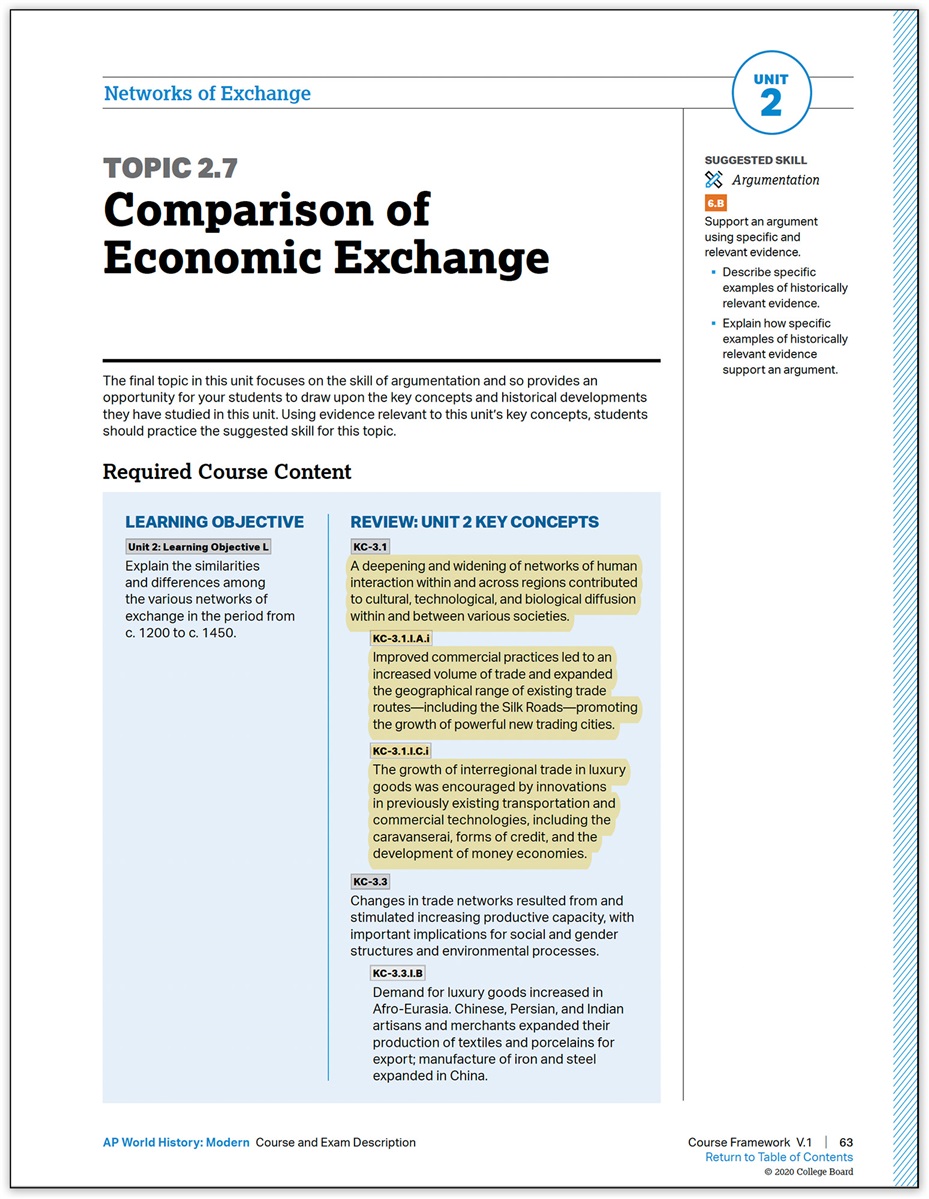By Bridgette Byrd O’Connor
Now that the glow of spring break has faded, there’s probably one pressing concern on your students’ minds. No, not the start of summer break—it’s the AP exam. If you’re racing to get through the last bits of content, and fear that you won’t have a lot of time for exam review, don’t worry, we have a plan for that! Some of our own creative World History Project (WHP) AP teachers devised an easy but thorough exam review that your students can do in one or two class periods using the AP® World History Course and Exam Description (CED).
I can already hear your students groaning at the mention of taking out a copy of the CED to review for the exam—I promise you, it’s not as bad as it sounds. While students probably lean toward binge watching a Crash Course review series for preparation (which is a useful way to spend their time), there’s really no better way to prepare for the AP exam than by using the document on which the exam is based. One of the most efficient and thoughtful ways to ensure that students understand the historical developments and the evidence for those developments is to turn the CED into a series of claims. Your students must then find the evidence that supports and refutes those claims. Even more exciting for you is that students will be doing most of the work and using an activity format with which they’re already familiar. [Cue drum roll.] I present to you the activity Claim Testing—AP Exam Review. (On second thought, maybe we should have also asked the teachers who created this for a more exciting activity name!)
 Claim testers posters. By OER, CC BY 4.0.
Claim testers posters. By OER, CC BY 4.0.
At this point in the WHP AP course, students should be familiar with the claim testing activity structure: they evaluate a set of claims and provide four pieces of evidence for that claim as well as one counterclaim. If your students need a refresher, have them review the Claim Testing—Globalization activity. But in this new activity, instead of having us give students the claims, they will be coming up with the claims themselves using the CED.
 Claim Testing—Globalization activity. By OER, CC BY 4.0.
Claim Testing—Globalization activity. By OER, CC BY 4.0.
One way of doing this is for students to write their claims using the final topic in each unit of the CED, where the review of that unit’s key concepts is listed. For example, students could write a claim for Unit 2 that provides an example for the “deepening and widening of networks of human interaction within and across regions” such as how the Mongols initiated a period of peace that generated increased trade along the Silk Road routes (CED 63). Evidence for this claim might include the Great Khan’s use of paper money “stamped with the emperor’s seal” that merchants accepted as payment for all types of goods, or how Chinggis Khan “turned most of the Silk Road into a safe and unified trade system.” Evidence to support a counterclaim might include how germs also traveled across these networks, decimating them during the thirteenth-century Black Death.
 Topic 2.7 of the AP® World History Course and Exam Description highlighted to show the relevant historical developments covered in the example above. © College Board, Fall 2020.
Topic 2.7 of the AP® World History Course and Exam Description highlighted to show the relevant historical developments covered in the example above. © College Board, Fall 2020.
Another idea would be to give each student group one of the AP themes and ask them to write four claims related to that theme with the requirement that each claim focus on a different unit of the CED. Groups would then write their four claims along with the evidence to support the claim and possible counterclaims. Students could then participate in multiple rounds of claim testing, with the group that wrote the claim acting as a judge to evaluate the proposed evidence and counterclaims.
Whatever method you use for having students write the claims, this activity will help them review the essential content needed to do well on the AP exam. How would you utilize the claim testing activity structure to create a review game for the AP exam? Share your ideas in the OER Project Community!
About the author: Bridgette Byrd O’Connor holds a DPhil in history from the University of Oxford and taught the Big History Project and World History Project courses and AP® US government and politics for 10 years at the high-school level. In addition, she’s been a freelance writer and editor for the Crash Course World History and US History curricula. She’s currently a content manager for the OER Project.
Cover image: Student taking an exam. © Commercial Eye/Getty Images.
 For full access to all OER Project resources AND our amazing teacher community,
For full access to all OER Project resources AND our amazing teacher community, 
Top Comments
-

Melissa Nowotarski
-
Cancel
-
Up
+1
Down
-
-
Reply
-
More
-
Cancel
Comment-

Melissa Nowotarski
-
Cancel
-
Up
+1
Down
-
-
Reply
-
More
-
Cancel
Children